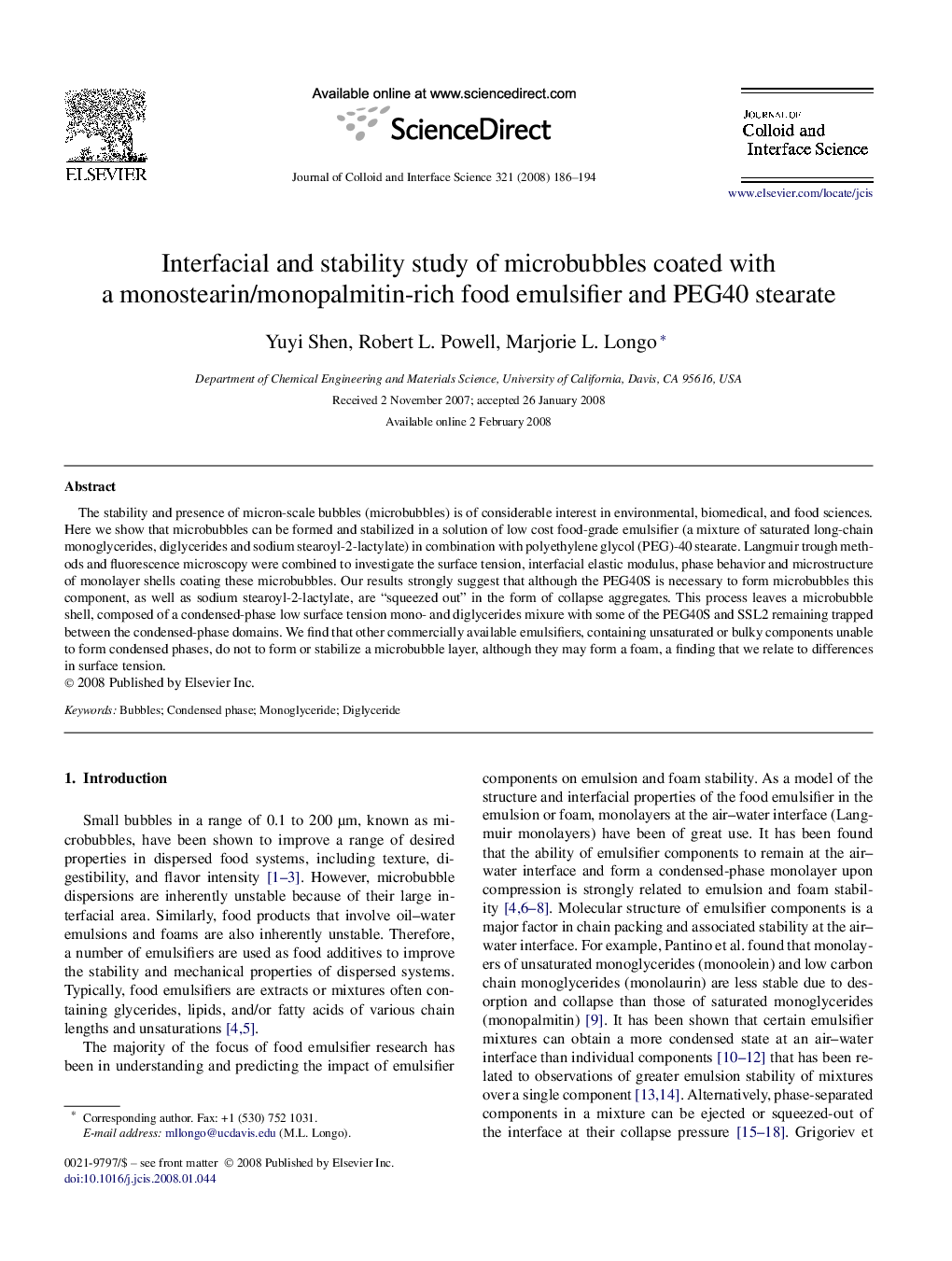| Article ID | Journal | Published Year | Pages | File Type |
|---|---|---|---|---|
| 611207 | Journal of Colloid and Interface Science | 2008 | 9 Pages |
The stability and presence of micron-scale bubbles (microbubbles) is of considerable interest in environmental, biomedical, and food sciences. Here we show that microbubbles can be formed and stabilized in a solution of low cost food-grade emulsifier (a mixture of saturated long-chain monoglycerides, diglycerides and sodium stearoyl-2-lactylate) in combination with polyethylene glycol (PEG)-40 stearate. Langmuir trough methods and fluorescence microscopy were combined to investigate the surface tension, interfacial elastic modulus, phase behavior and microstructure of monolayer shells coating these microbubbles. Our results strongly suggest that although the PEG40S is necessary to form microbubbles this component, as well as sodium stearoyl-2-lactylate, are “squeezed out” in the form of collapse aggregates. This process leaves a microbubble shell, composed of a condensed-phase low surface tension mono- and diglycerides mixure with some of the PEG40S and SSL2 remaining trapped between the condensed-phase domains. We find that other commercially available emulsifiers, containing unsaturated or bulky components unable to form condensed phases, do not to form or stabilize a microbubble layer, although they may form a foam, a finding that we relate to differences in surface tension.
Graphical abstractπ–Aπ–A isotherm combined with fluorescence microscopy show the monolayer of each stable microbubble was composed of condensed phase monostearin/monopalmitin-rich domains with expanded phase entrapped between compressed domains.Figure optionsDownload full-size imageDownload as PowerPoint slide
